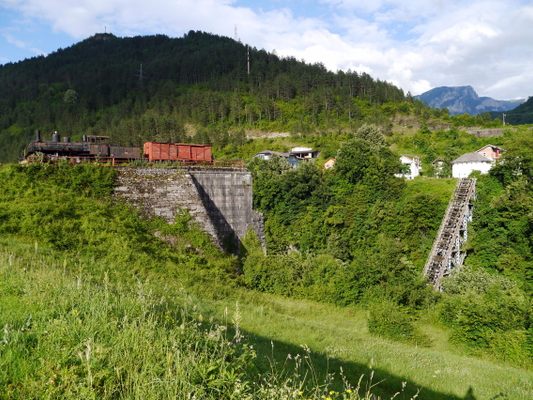About
During the Second World War, Bosnia was the scene of some of the fiercest battles between the Yugoslav Partisans (the Communist guerrilla-resistance) and the Axis Powers.
The Axis Powers tried, ultimately unsuccessfully, to annihilate the Partisan guerrillas in a series of fierce military operations. At times, the Axis Powers came quite close to annihilating the resistance, especially during what would be later known as the Battle of Neretva, which was the culmination of an operation codenamed Fall Weiss.
The main targets of the operation were the Partisan leadership, the Central Committee of the Communist Party of Yugoslavia, and the main Partisan mobile hospital. To carry out this anti-Communist operation, the Axis Powers amassed six German, three Italian, and three Croat divisions, along with several regiments of Chetniks and Serbian Royalist guerrillas, employing Italian allies.
At a crucial point in the battle, the Partisans found themselves surrounded in a narrow pocket on the west bank of Neretva River, near the town of Jablanica, Herzegovina. With their backs to the river, they faced the advance of main the German force, supported by several Panzer brigades. The opposite side of the river, the east, was guarded by far inferior Chetnik forces. Despite this, the Partisans didn't have enough time to force their way across the river. The Neretva is a swift river, flowing through mountainous terrain and impassable at most places. The only link to the other side was a single railway bridge heavily guarded by Chetnik forces.
Defeat seemed imminent. The Partisans, however, staged an ingenious deception. They blew up the bridge. When air reconnaissance reports came in, the German command concluded that the Partisans were probably planning to push north along the west bank of the river, and that they destroyed the bridge in a desperate attempt to boost morale in their ranks. They immediately changed the course of their attack and started redeploying northwards.
This gave precious time to the Partisan engineers to repair the bridge. The bridge had been blown up in a way that, from the air, made it look totally out of commission, while its main structure remained partially intact.
The Partisans then stormed the east bank of the river and overwhelmed the surprised Chetnik forces. Despite seeing through the Communists' plan quite quickly, the Axis Powers were caught flat-footed. They couldn't redeploy in time. They managed to organize a Luftwaffe air raid, but the effect was only partial due to the area's mountainous terrain. The bridge, however, was once again destroyed—this time for real, by the Luftwaffe's bombardment.
After the war, a new railway bridge was built on the same spot. The events of the battle were depicted in a 1969 Yugoslavian movie which featured well-known Hollywood actors Yul Brynner and Orson Welles, the latter in the role of a Chetnik commander.
In order to realistically depict the Battle's climactic scene in the movie's finale, director Veljko Bulajic decided to blow up the actual bridge. He expected that the remains of the bridge would become a tourist attraction. But none of the actual shots made it into the final cut, as thick clouds of black smoke obscured the view. The scene was finally shot with a scale replica on a sound stage in Prague.
Today, there is a museum dedicated to the battle in the town of Jablanica.
Related Tags
Community Contributors
Added By
Published
June 14, 2012














































